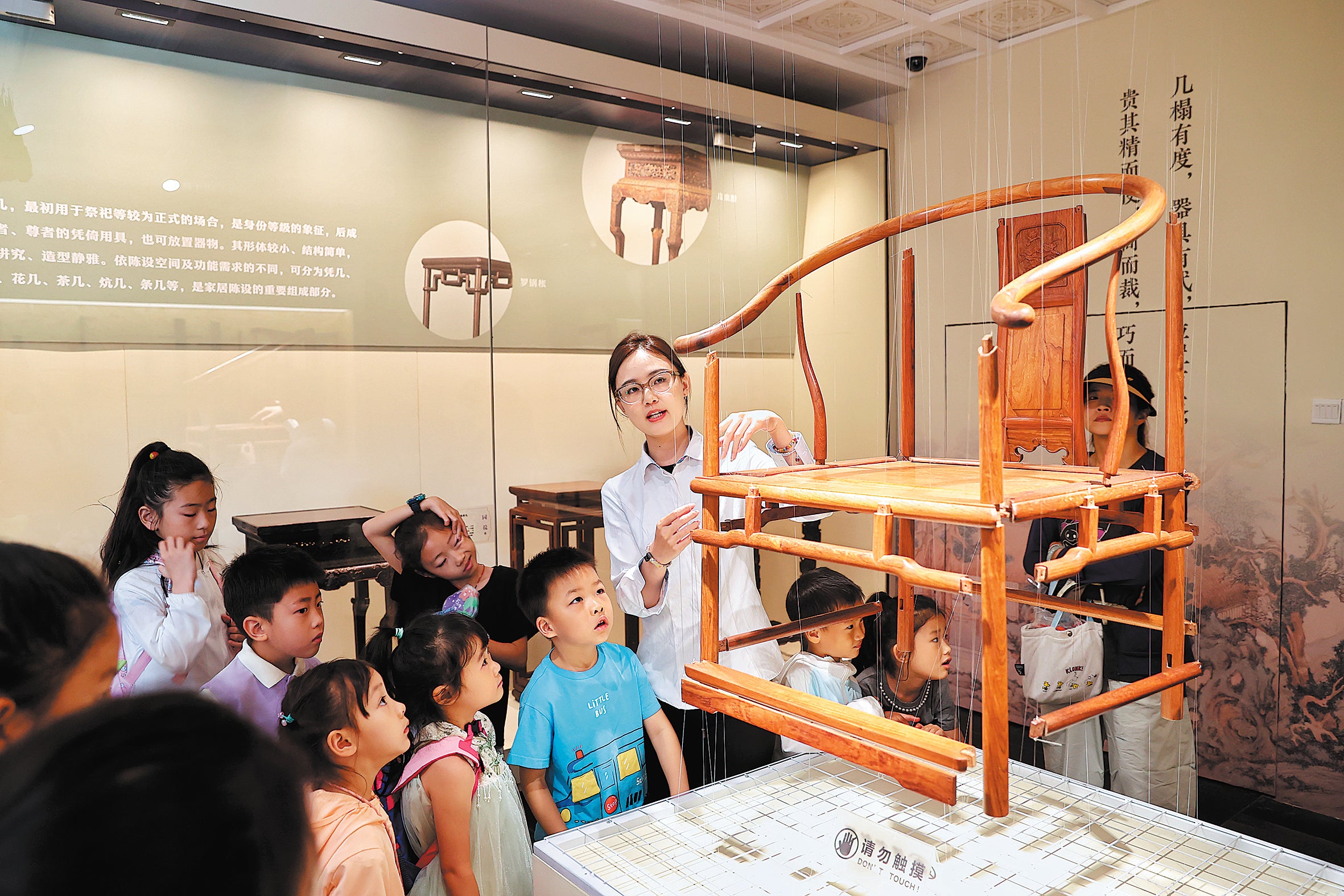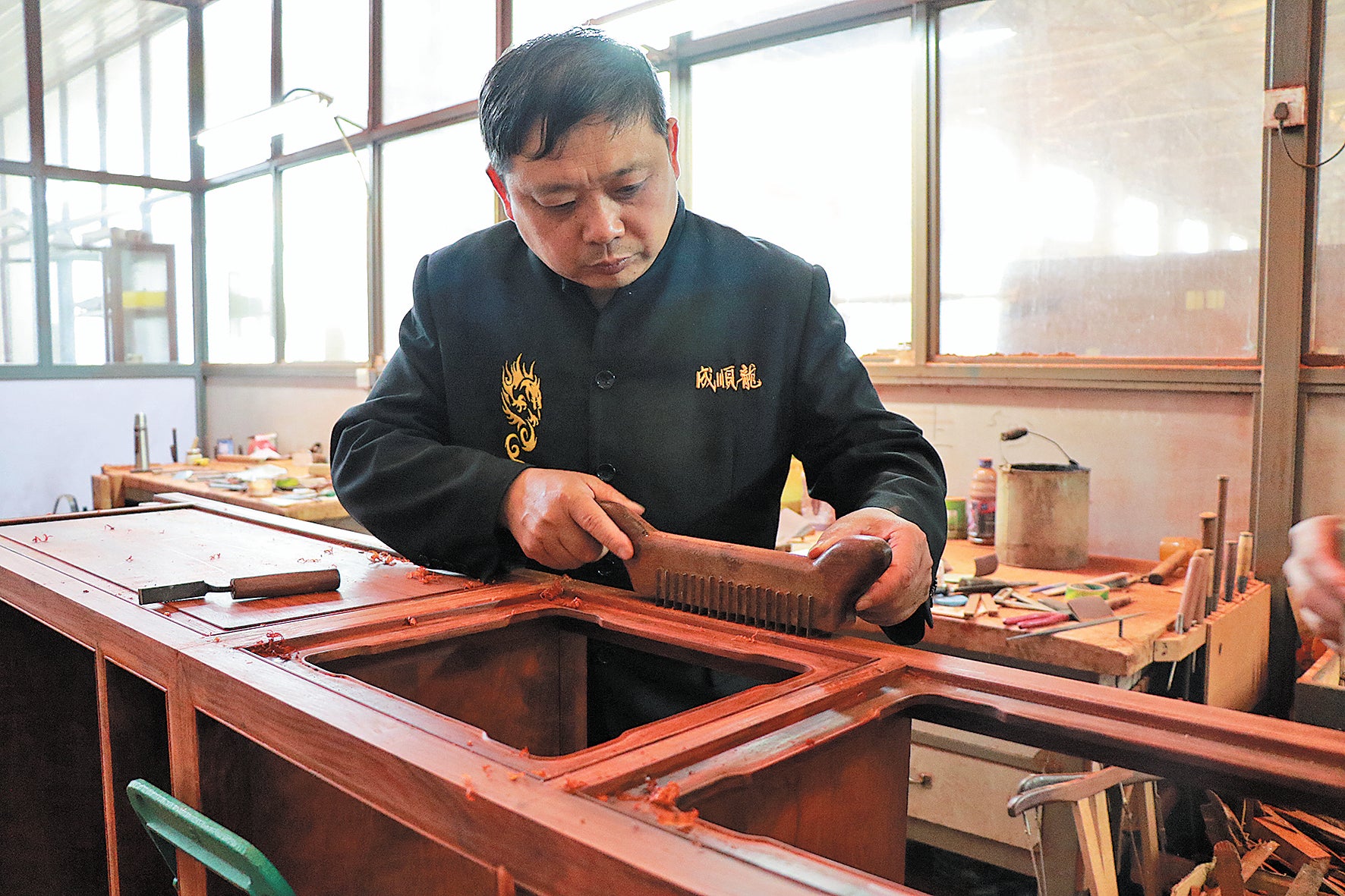Furnishing a career steeped in heritage
THE ARTICLES ON THESE PAGES ARE PRODUCED BY CHINA DAILY, WHICH TAKES SOLE RESPONSIBILITY FOR THE CONTENTS

The smooth, timeworn contours of a wooden chair seem to whisper tales from another era. Along its armrests, the elegant curves embody centuries of mastery, each line an echo of the artisans who crafted it.
But upon closer examination, this seemingly ancient chair has secrets to tell: A sleek cushion now rests against the back, its curve subtly adjusted for modern ergonomics. Hidden beneath each leg are small wheels, allowing this sturdy piece of craftsmanship to glide across the floor.
This chair, a product of tradition fused with innovation, was created by Liu Gengsheng, 60, a master of Beijing-style wooden furniture. The craftsmanship behind it has been recognised as a national-level intangible cultural heritage since 2008.
It is a meticulous reproduction of a Qing Dynasty (1644-1911) relic from the Palace Museum, adorned with traditional motifs and intricate openwork carvings.
The design adheres strictly to ancient methods — no screws, only sunmao (mortise-and-tenon) joints, with each leg carved from the same piece of wood.
But Liu’s work represents more than just craftsmanship; it is a glimpse into a tradition that stretches far beyond his workshop.
Across China, traditional wooden furniture has long been admired not only for its meticulous construction and visual appeal, but also for the cultural stories embedded within its patterns and motifs — stories that reflect centuries-old aspirations for harmony and prosperity.
Today, this craftsmanship endures thanks to the dedicated efforts of artisans like Liu.

But making these pieces is only the beginning. The tradition extends into artefact restoration, antique reproduction and contemporary design. In each of these areas, artisans, restoration specialists and designers are preserving a dual heritage — the practical skills of woodworking and the deep cultural roots that ground these creations.
The result is a bridge between the past and future, where handcrafted furniture serves as a functional piece and a vessel of China’s cultural legacy, inviting modern audiences to connect with tradition through the objects they use every day.
Liu has spent over 40 years crafting wooden furniture. He was born and raised in Beijing’s Luban Hutong, an alley that was named after the legendary master carpenter Lu Ban and teeming with artisans and craft shops.
At 19, Liu followed his father’s footsteps, joining the century-old brand Longshuncheng to learn the craft of Beijing-style wooden furniture.
Beyond crafting, Liu has mastered the skills of restoring antique furniture. In 1999, he established a restoration centre.
“Some customers bring us nothing more than a pile of wood, barely more than kindling. We approach each piece with a genuine desire to restore it to its former glory,” Liu says.
“From a single piece, you can glimpse the design philosophy and craftsmanship of the time, and also the continuity of Chinese culture.”
Traditional Chinese wooden furniture is categorised into three main styles — Beijing, Canton (today known as Guangzhou in southern Guangdong province) and Suzhou in eastern Jiangsu province.
“Canton-style integrates Chinese and Western influences, showcasing a diverse and inclusive range of designs. Suzhou-style is known for its meticulous craftsmanship and understated elegance while Beijing-style, originally used in imperial courts, combines the opulent material use of Canton-style with the intricate workmanship of Suzhou-style, emphasising the ceremonial aspects of furniture,” explains Ou Shengchun, 65, who has dedicated over 40 years to designing and creating classical wooden furniture.
Alongside his work, Ou also curates a collection of classical Chinese furniture from both domestic and international sources.
“Our passion for classical furniture remains undiminished, and we continue to be inspired by the wisdom and skills of ancient artisans,” he says.
